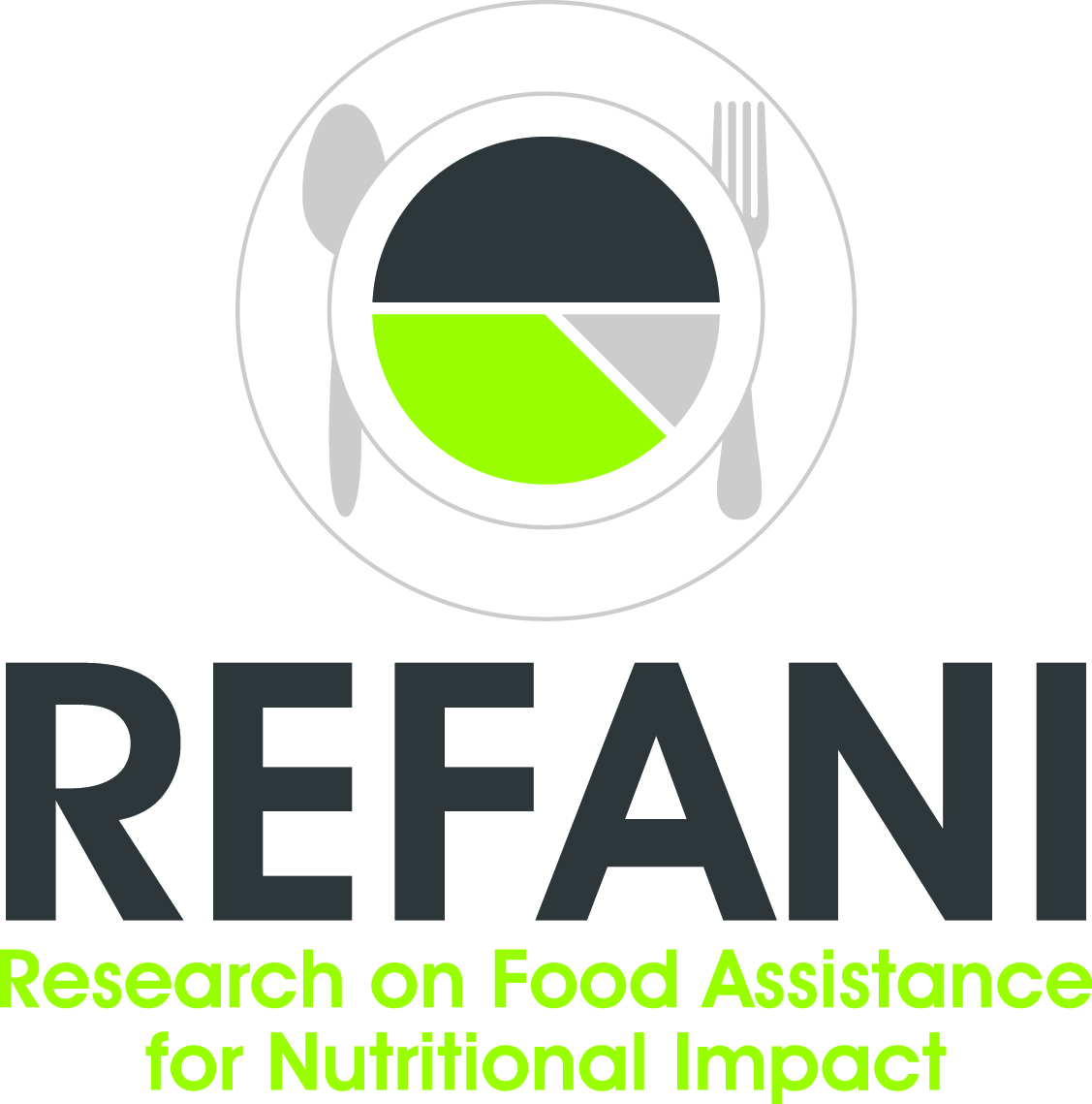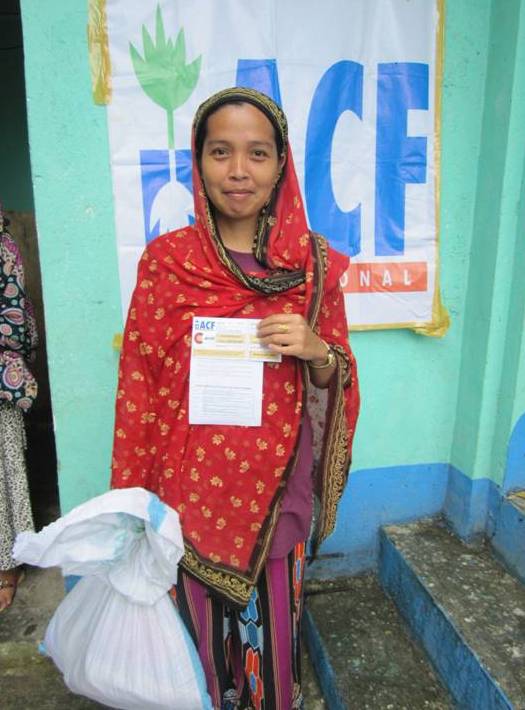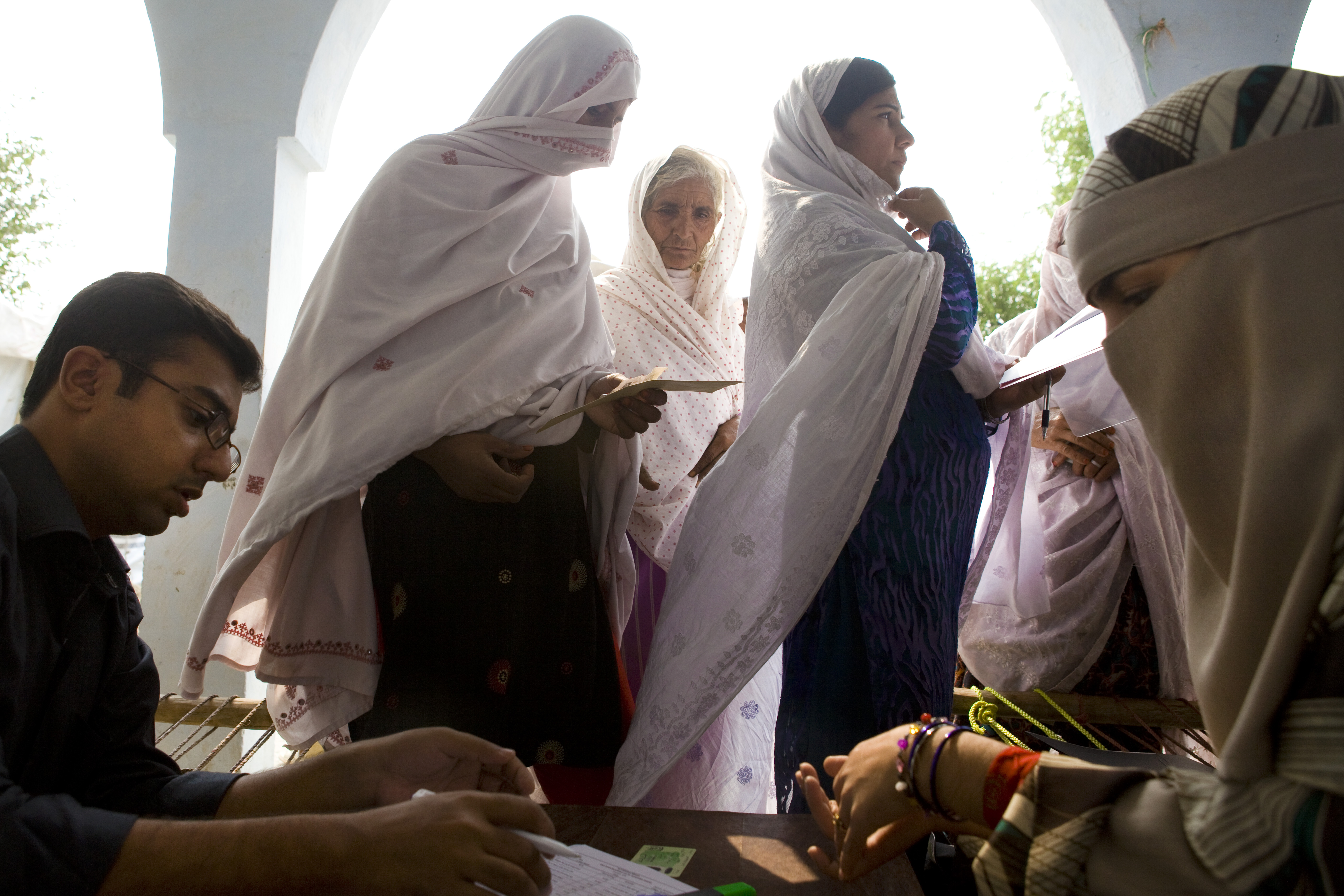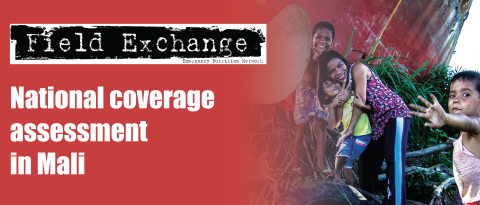Literature review on impact of cash transfers on nutritional outcomes
By Bridget Fenn and Ellyn Yakowenko
Bridget Fenn is an epidemiologist with a background in nutrition. She is currently a consultant for the Emergency Nutrition Network (ENN) and is Principle Investigator on the Research in Food Assistance for Nutrition Impact (REFANI) Pakistan study involving seasonal cash transfers (cash and vouchers) and the impact on childhood nutritional status in humanitarian settings.
Ellyn Yakowenko is a senior specialist in Food Security and Conflict Resolution. She is currently finalising her PhD in Conflict Analysis and Resolution from George Mason University and has an M.A.in International Development.She has worked as a Specialist for the Conflict Action Research Network (CARN) and is currently the Research Coordinator for the REFANI based in New York.
 The authors acknowledge the contributions of Andrew Seal, Carlos Grijalva Eternod, Carmel Dolan, Floor Grootenhuis, Jeremy Shoham, Julien Morel, Myriam Ait-Aissa, Muriel Calo, Silke Pietzsch and Victoria Sibson in the development of this article.
The authors acknowledge the contributions of Andrew Seal, Carlos Grijalva Eternod, Carmel Dolan, Floor Grootenhuis, Jeremy Shoham, Julien Morel, Myriam Ait-Aissa, Muriel Calo, Silke Pietzsch and Victoria Sibson in the development of this article.
The Consortium for Research on Food Assistance for Nutrition Impact (REFANI) – comprised of Action Against Hunger | ACF International (ACF), Concern Worldwide, the Emergency Nutrition Network (ENN) and the University College of London (UCL) – is a three year project funded by UKAID, aimed at strengthening the evidence base on the nutritional- and cost-effectiveness of food assistance programmes. REFANI’s research focuses on three studies with cash and/or voucher-based food assistance interventions. REFANI’s objective is to determine whether a reduction in acute malnutrition and/or an improvement in micronutrient status can be achieved through the intervention. A cost-effectiveness component will evaluate the tested interventions. The REFANI literature review focused on the evidence gaps in measuring the impact of cash transfers (CTs) on nutritional outcomes. This is a synopsis of the review.
Emerging cash-based solutions
CTs are direct cash payments or transfers using modalities such as paper vouchers, debit/smart cards or mobile phones. Transfers can be conditional (CCTs), where participants need to meet a defined set of standards (such as attending an education session, getting a child vaccinated, etc.) or unconditional (UCTs). The choice of food, cash or voucher transfer should be made on the basis of an assessment of population needs, cost efficiency, the market availability of basic goods, the functioning of markets and secondary market impacts, the flexibility of the transfer and risks of insecurity and corruption (DG ECHO 2013, DFID 2013, Sphere 2011, ACF 2007). CTs need to take into consideration recipient preferences (Harvey and Bailey 2011, Bailey and Hedlund 2012), scale and value of the transfers, convenience to recipients (Devereux 2008) and targeting and ‘labelling’ of the transfer, both of which may influence a household’s spending patterns (Kooreman 2000, Lyssiotou 2005).
Cash transfers and nutritional outcomes
There is a trend towards developing complementary or alternative approaches for preventing acute malnutrition. In 2014, CTs addressing nutrition accounted for about 11% of the total of cash interventions, but the inclusion of nutritional outcomes has not been the norm (Bailey and Hedlund 2012). The fungible nature of cash is both an advantage and a challenge in terms of achieving specific outcomes (Harvey and Bailey 2011). It has been suggested that for CTs to have a nutritional outcome, they require more explicit nutrition objectives and actions and need to ensure access to quality health services (Leroy et al. 2009, Alderman 2014).
Presently there is limited and inconsistent evidence on the impact of CTP on nutritional outcomes (Ruel and Alderman 2013, Manley 2012). A general consensus is, that transfers (both food and cash/vouchers) are not likely to be efficacious when implemented as stand-alone interventions and are most effective when complemented with other nutrition-sensitive and nutrition-specific interventions (Bailey and Hedlund 2012, Black et al. 2008, Bhutta et al. 2008, Ruel and Alderman 2013, Holmes and Bhuvanendrah 2013).
Gaps in knowledge on impact of cash transfers on nutritional outcomes
There is insufficient empirical evidence to demonstrate that cash is an appropriate substitute for food-based interventions to prevent acute malnutrition in children or mothers, including pregnant and lactating women (PLW), and to understand the circumstances under which CT interventions are likely to be effective. The existing evidence of the impact of CT on nutritional outcomes originates mostly from conditional cash transfers implemented in development contexts in Latin America, with mixed results (DFID 2011, Manley et al. 2012, IEG 2011, Gaarder et al. 2010, Fiszbein et al. 2009, Bailey and Hedlund 2012). The focus on nutritional outcomes in these studies centres mostly on children and rarely on women (Holmes and Bhuvanendrah 2013). The possible reasons for mixed results include: (1) differences in programme factors, e.g. additional complementary interventions; (2) different CT design features, e.g. the amount of the CT (Holmes and Bhuvanendrah 2013); (3) differences in evaluation indicators, especially when different indicators are used to measure the same aspect e.g. women’s empowerment (Carlson et al. 2014); and, (4) attribution complexity on the other sources of household income, e.g. remittances have not been adequately accounted for (Molyneux 2008).
 Complementary interventions
Complementary interventions
Taking into account the food intake and natural disease cycle, there is a consensus that CTs need to be complemented with other nutrition-specific and -sensitive interventions to maximise effectiveness (Bailey and Hedlund 2012, Black et al. 2008, Bhutta et al. 2008, Ruel and Alderman 2013, Holmes and Bhuvanendrah 2013). In terms of nutritional outcomes, no significant difference was found between the cash only strategy, compared with the food only strategy (Langendorf et al. 2014). Bailey and Hedlund (2012) conclude that cash is unlikely to impact through a health pathway, unless access to quality health services is guaranteed. More evidence is required on the specific impacts and pathways conferred by complementary interventions to CTs and to identify the contexts in which CT complementary interventions are required to prevent or reduce the risk of developing undernutrition.
Design, communication and sustainability
Designing appropriate context specific CT is critical. This requires a good understanding of the enabling environment of a programme. CTs need to be disbursed in a timely and predictable manner, with clear programme guidelines on eligibility, schedule and time periods for entitlements, if households are to manage risks effectively (Barrientos and Scott 2008). The design features of CTs, timing and duration of the intervention, the amount of the transfer, the frequency of distribution, conditionality, modality (cash vs voucher), and the effective communication of CT objectives all have a potential impact on the nutritional success of a CT. At present, evidence of the actual impact is difficult to interpret, and appears to be conflicting and context specific.
Targeting interventions to PLW and younger children, during the first one thousand days window, has greater impact on child nutritional outcomes (Bhutta et al. 2008, Bryce et al. 2008). However limited evidence exists on the impact of emergency CTs on child nutritional status and none on PLW. There is also little evidence on how a CT recipients’ gender determines the outcomes, both in the short and longer term (Lyssiotou 2005, Attanasio & Lachene 2002). There is no evidence on longer-term cost-effectiveness of CTs or on the number of cases of malnutrition averted in the medium and longer-term (Bailey and Hedlund 2012).
Behaviours, processes, empowerment, care practices and nutrition impact pathways
Evidence on household level decision-making regarding the use of CTs is limited and difficult to generalise as it is highly context-specific and depends to some extent on socio-cultural norms and individual choices (Barrientos and DeJong 2004). It is important to unpack the factors that determine CT recipient’s decision-making, use of the transfer and how this influences child’s nutritional status.
Mother’s well-being – diet, mental and physical health and empowerment – determines their own nutritional status and their ability to care for their child, which both ultimately affect the child’s nutritional status (Carlson et al. 2014, van den Bold et al. 2013). For women and mothers, there appears to be little evidence to indicate the impact of emergency CTs on the underlying determinants of their nutritional status. Improving women’s nutritional status is rarely a specific objective; when it is, anthropometric data is not collected to assess an intervention’s outcome.
Provision of CTs to women could free up their time by reducing the need to pursue income-generating activities and might have positive outcomes on child feeding and caring practices (Leroy et al. 2009). However, giving women a CT could increase risk of intimate partner violence (IPV). Given the growing evidence of a significant association between IPV and wasting, stunting and underweight (Hasselmann and Reichenheim 2006, Ackerson and Subramanian 2008, Rico et al. 2011, Salazar et al. 2012), this relationship needs to be further unpacked.
Despite some positive examples of improved knowledge and attitudes of mothers enrolled in CTs with complementary education components, more research is needed on how CTs may affect the social and care environment (Bailey and Hedlund, 2012).
 Cost-effectiveness
Cost-effectiveness
Findings indicate that CTs are potentially an affordable option to fulfil food assistance objectives. However, there remains a large gap regarding the measurement of CT cost-effectiveness generally, and specifically in addressing nutritional outcomes (Hoddinott et al. 2013, Hidrobo at al. 2012, Audsley et al. 2010 & Devereux et al. 2008).
Given these identified gaps in knowledge and evidence around CTs and nutritional outcomes, the REFANI research is geared to address some of these gaps. To stay informed on REFANI studies and activities, please visit www.actionagainsthunger.org/refani or get in touch with Ellyn Yakowenko, email: eyakowenko@actionagainsthunger.org
 References
References
http://www.wahenga.net/sites/default/files/briefs/REBA_Thematic_Brief_5.pdf
FISZBEIN, A., SCHADY, N., FERREIRA, F. H. G., GROSH, M., KELLEHER, N., OLINTO, P. & SKOUFIAS, E. 2009. Conditional cash transfers : reducing present and future poverty. A World Bank Policy Research Report. Washington, DC.: The World Bank.
GAARDER, M., GLASSMAN, A. & TODD, J. 2010. Conditional cash transfer programmes: opening the causal chain. Journal of Development Effectiveness, 2, 1-5.
HARVEY, P. & BAILEY, S. 2011. Cash transfer programming in emergencies. Good Practice Reviews. Overseas Development Institute.
HASSELMANN, M. H. & REICHENHEIM, M. E. 2006. Parental violence and the occurrence of severe and acute malnutrition in childhood. Paediatr Perinat Epidemiol, 20, 299-311.
HIDROBO, M., HODDINOTT, J., PETERMAN, A., MARGOLIES, A. & MOREIRA, V. 2012. Cash, Food, or Vouchers? : Evidence from a Randomized Experiment in Northern Ecuador. IFPRI Discussion Paper 01234. Washington, DC: International Food Policy Research Institute.
HODDINOTT, J., GILLIGAN, D., HIDROBO, M., MARGOLIES, A., ROY, S., SANDSTRÖM, S., SCHWAB, B. & UPTON, J. 2013a. Enhancing WFP’s Capacity and Experience to Design, Implement, Monitor, and Evaluate Vouchers and Cash Transfer Programmes : Study Summary. Washington, DC.: International Food Policy Research Institute,.
HODDINOTT, J., SANDSTRÖM, S. & UPTON, J. 2013b. The impact of cash and food transfers: Evidence from a randomized intervention in Niger. Selected Paper prepared for presentation at the Agricultural & Applied Economics Association’s 2013 AAEA & CAES Joint Annual Meeting, Washington, DC, August 4-6, 2013.
HOLMES, R. & BHUVANENDRAH, D. 2013. Social protection and resilient food systems: The role of cash transfers.
IEG 2011. Evidence and Lessons Learned from Impact Evaluations on Social Safety Nets. Washington DC: World Bank.
Kooreman, P. 2000. The labeling effect of a child benefit system. American Economic Review, 90 (3), 571–583.
KRAMER, M.S. 2003. The Epidemiology of Adverse Pregnancy Outcomes: An Overview Journal of Nutrition. 133: 5 1592S-1596S
Langendorf C, Roederer T, de Pee S, Brown D, Doyon S, et al. (2014) Preventing acute malnutrition among young children in crises: a prospective intervention study in Niger. PLoS Med 11: e1001714.
LEROY, J. L., RUEL, M. & VERHOFSTADT, E. 2009. The impact of conditional cash transfer programmes on child nutrition: a review of evidence using a programme theory framework. Journal of Development Effectiveness, 1, 103-129.
MANLEY, J., GITTER, S. & SLAVCHEVSKA, V. 2012. How Effective are Cash Transfers at Improving Nutritional Status? A Rapid Evidence Assessment of Programmes’ Effects on Anthropometric Outcomes. World Development. London: EPPI-Centre, Social Science Research Unit, Institute of Education, University of London.
MOLYNEUX, M. 2008. Conditional Cash Transfers: A ‘Pathway to Women’s Empowerment’? Pathways Working Paper 5. Sussex: IDS.
RICO, E., FENN, B., ABRAMSKY, T. & WATTS, C. 2011. Associations between maternal experiences of intimate partner violence and child nutrition and mortality: findings from Demographic and Health Surveys in Egypt, Honduras, Kenya, Malawi and Rwanda. J Epidemiol Community Health, 65, 360-7.
RUEL, M. T. & ALDERMAN, H. 2013. Nutrition-sensitive interventions and programmes: how can they help to accelerate progress in improving maternal and child nutrition? Lancet, 382, 536-51.
SALAZAR, M., HOGBERG, U., VALLADARES, E. & PERSSON, L. A. 2012. Intimate partner violence and early child growth: a community-based cohort study in Nicaragua. BMC Pediatr, 12, 82.
VAN DEN BOLD, M., QUISUMBING, A. R. & GILLESPIE, S. 2013. Women’s Empowerment and Nutrition. An Evidence Review. IFPRI Discussion Paper 01294. International Food Policy Research Institute.


